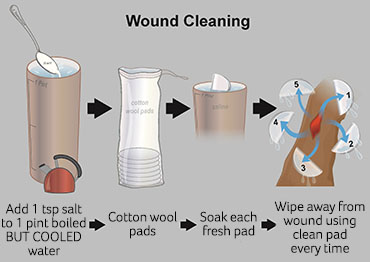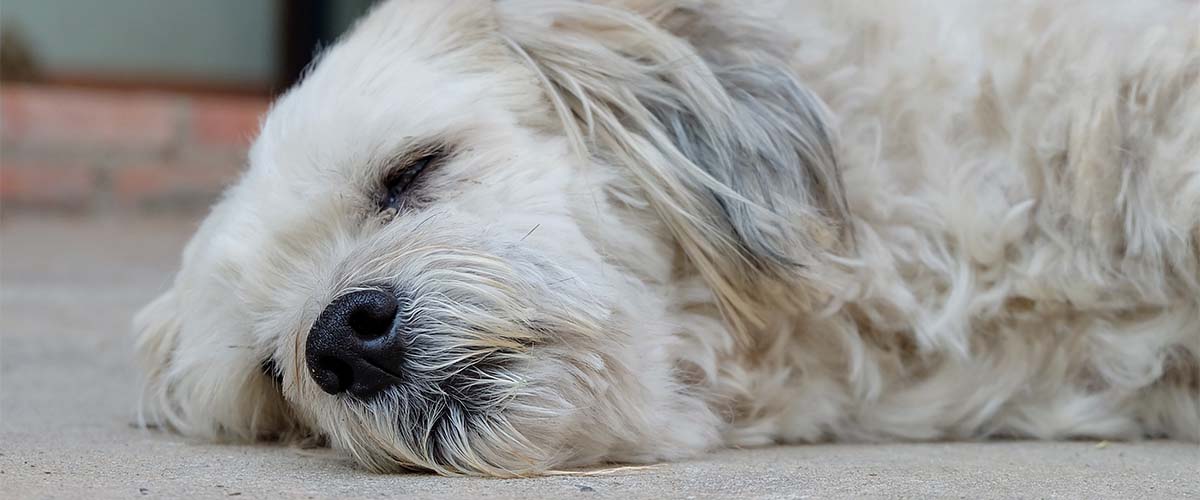First aid for wounds, cuts and grazes
Overview
- If you find a wound on your pet, check them for other injuries, keep the wound clean and if necessary, have them assessed by a vet.
- Minor wounds can often be treated at home.
- Deep/large wounds should always be checked by a vet.
- All wounds, no matter how big or small should be monitored for signs of infection as they heal.
What to do if your pet has a wound
Step one: Check your pet
- Does your pet seem alright in themselves? Do they have any other injuries? Are they in pain or shock?
- If you are worried about your pet, cover their wounds, keep them warm and call your vet straight away.
Step two: Assess their wounds
- Small and not bleeding - move to step three.
- Bleeding heavily - apply pressure to the wound with a dry, clean dressing and call your vet straight away.
- Areas of skin missing - cover the wound with a clean, dry dressing and call your vet straight away. If your pet seems uncomfortable when you try to cover the wound, or if you don’t have a dressing available, leave the area uncovered.
- If there is something inside the wound (such as piece of glass), don’t try to remove it and avoid putting any pressure on it. Take your pet to the vet.
Step three: Flush the wound
- If your pet has a small wound or graze, that is not bleeding heavily, gently run water over it for as long as your pet will tolerate to help to remove as much dirt and bacteria as possible.
- Use salt water or clean lukewarm tap water. You can make saltwater by adding one teaspoon of salt to a pint of cooled (previously boiled) water.
Step four: Book an appointment with your vet
- If your dog’s wound is large, very painful, bleeding heavily or has something stuck in it, contact your vet ASAP.
- If your dog’s wound is minor, you may be able to treat it at home (see ‘wound care’ below).

You may need to make a solution to clean the wound. Click image to enlarge.
Home care for a minor wound
The advice below is for minor cuts and grazes, for anything more serious seek veterinary advice.
Cleaning
- Clean your dog’s wound two to three times daily with salt water (see image above).
- Don’t use anything else to clean the wound unless you have spoken to your vet - even veterinary antiseptics can slow down healing.
Protection
- If your pet bites, licks or scratches their wound they can cause serious damage and create infection.
- Prevent your pet from causing further damage to their wound by using a buster collar, body suit or a protective sock.
Monitor for infection
- Signs of infection include heat, itching, swelling, discharge and redness.
- Take your pet to the vet if you are concerned their wound is becoming infected, or if it hasn’t healed within a few days. They may need antibiotics or further treatment.
Published: April 2020
Did you find this page useful?
Tell us more
Please note, our vets and nurses are unable to respond to questions via this form. If you are concerned about your pet’s health, please contact your vet directly.
Thank you for your feedback
Want to hear more about PDSA and get pet care tips from our vet experts?
Sign up to our e-newsletter
Written by vets and vet nurses. This advice is for UK pets only. Illustrations by Samantha Elmhurst.

